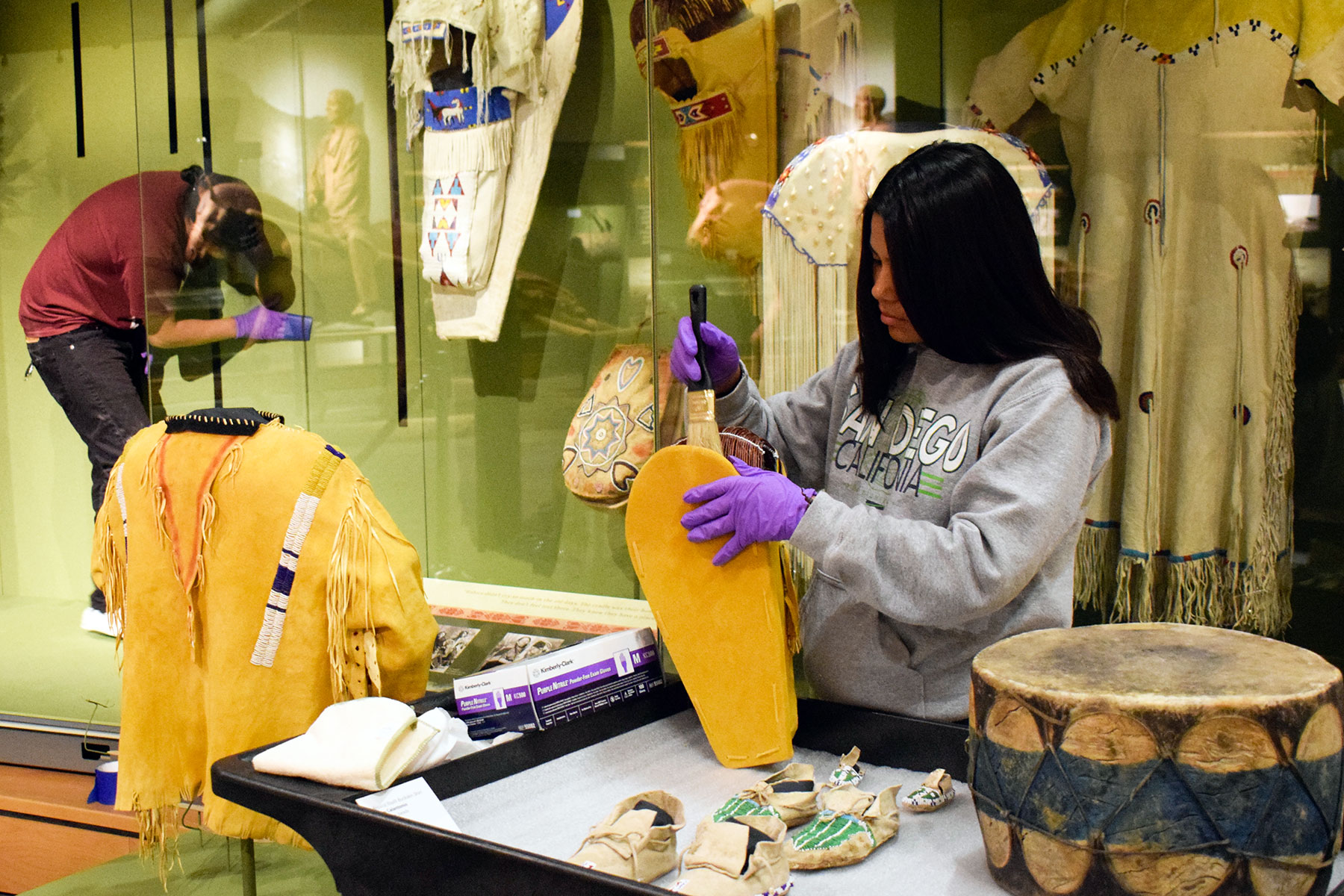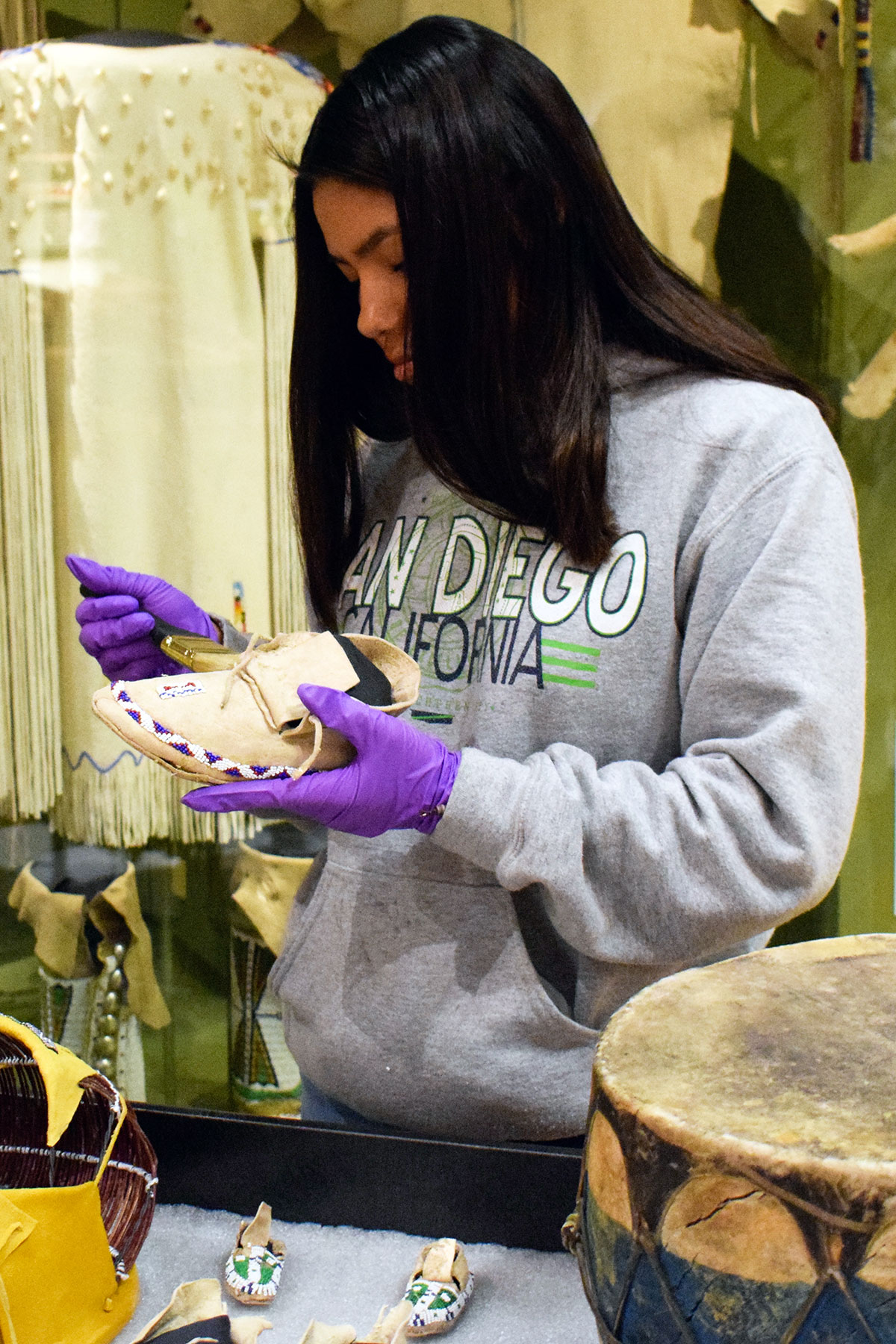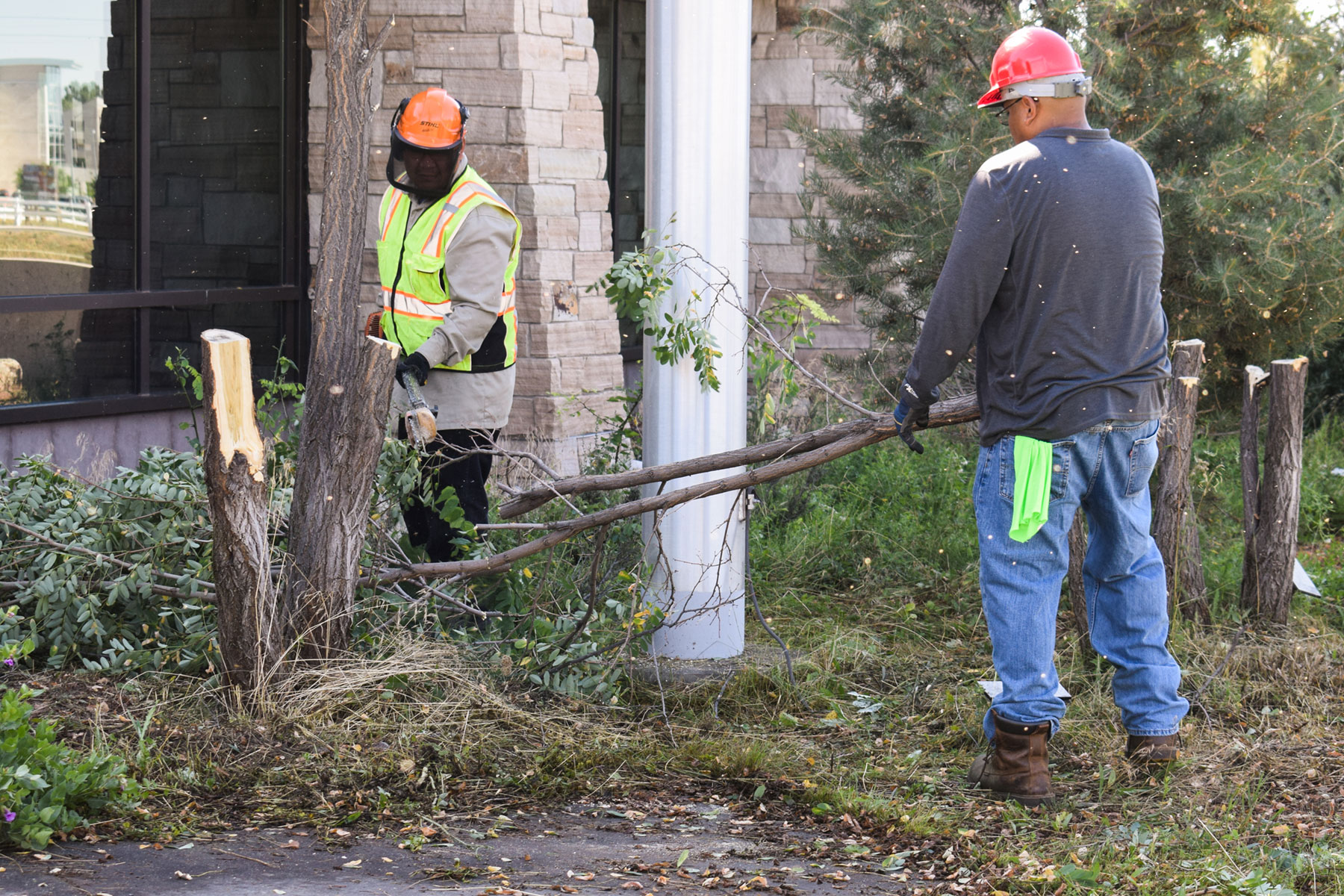Cleaning is no easy feat when you work in a museum full of priceless artifacts, just ask the Director of the Southern Ute Museum, Linda Baker.
“There are many things to take into consideration while cleaning,” explained Baker, indicating to a variety of display items moved into the permanent gallery, in order to clean the display cases. “Everything [artifacts and displays] is put on Styrofoam and different cleaning techniques are used.”
For many who are not familiar with the work that takes place in a museum, the approach to cleaning is unique. The Styrofoam is used to reduce the contact of items within the display cases with contaminants on the floor. Other tools like microfiber cleaning cloths, brushes, metal screens and vacuums are used in order to make sure that every inch of the display cases are clean. For the Southern Ute Museum, all display cases are cleaned once a year in order to prevent the accumulation of harmful agents to artifacts.
According to The South Australian Community History, dust is one of the biggest problems for artifacts, as it is composed of materials and matter from both inside and outside a building. Dust can get into the display cases which also causes more damage to the artifacts. In many cases, dust does not just carry dirt, but it can also contain other agents like: soot, chemical pollutants and human byproducts, such as dead skin cells and hair.
Bugs and other pests can also be an issue, as they can get into the cases and destroy the artifacts. It is the responsibility of the museum staff to pay close attention their exhibits in order to detect problematic conditions within their gallery.
The artifacts are also cleaned as well in order to help maintain their current condition. An artifact must be handled with care, as many are fragile and can be damaged with too much pressure or mishandling in any form. Special steps are taken in order to ensure that the artifacts are handled properly and have as little exposure as possible to harmful chemicals or agents that may be present within the environment.
Museum employees must ensure that all parts of the cases are cleaned by using micro-static cleaning cloths or other dust deterring cleaning products. A vacuum and a screen are also used in order to ensure that as much of the dust is out of the case as possible. Traditional dusting techniques redistribute particles rather than removing the dust completely.
The cleaning process must be done by individuals who have the training and knowledge in order to do it properly. Interns and other volunteers are able to get the experience by helping aid those professionals in the meticulous cleaning process.
“It’s team work,” explained Baker. “You kind of have to plan ahead [to get it done properly].”
Other parts of the museum are cleaned more regularly like the floor and the glass of the display cases. Everything – including the airducts – must be cleaned in order to ensure the museum will be a success in the future through the safekeeping of artifacts and history.






